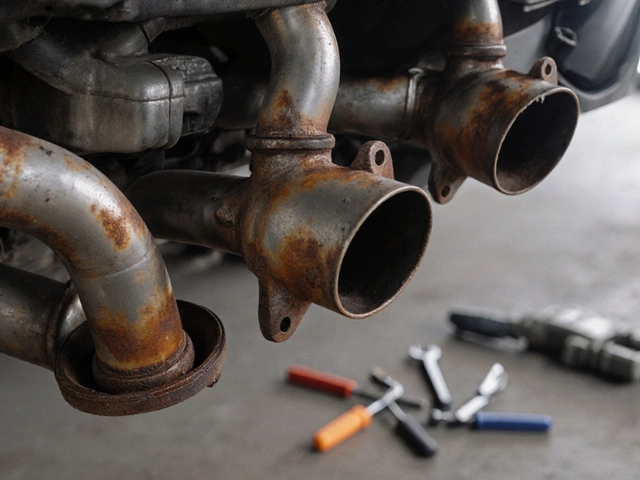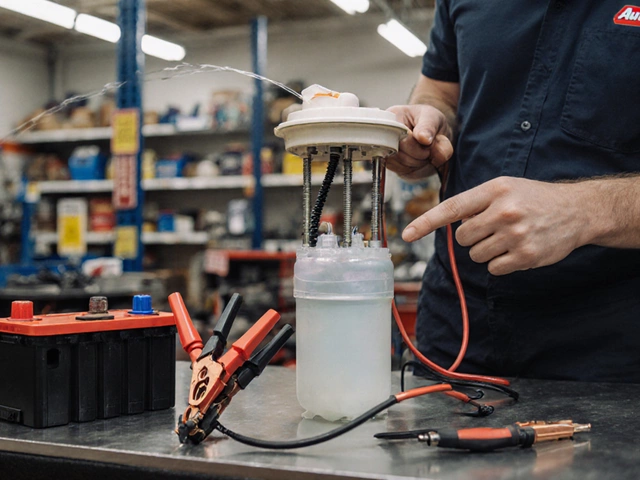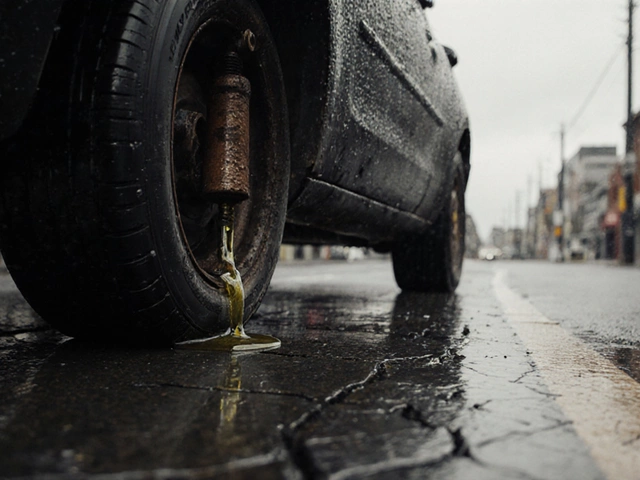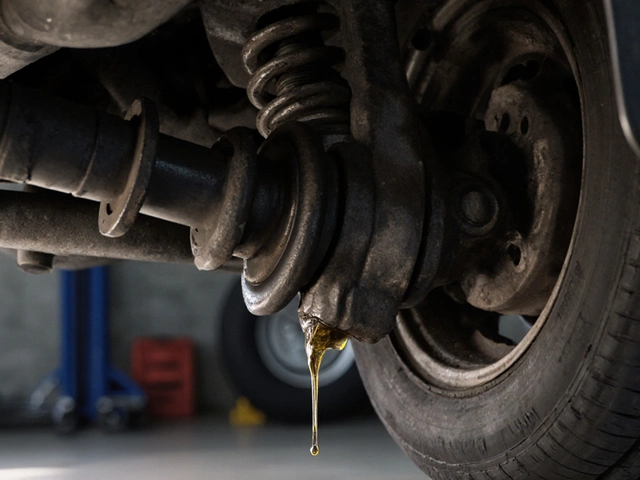Wiper Blade Cost Calculator
Your Current Setup
Silicone Option
Results
Note: This calculator assumes standard usage in moderate climate. In coastal areas like Auckland, rubber blades degrade faster than average, making silicone even more cost-effective.
It’s raining hard in Auckland again. You turn on your wipers, and they smear instead of clear. That streak across your windshield isn’t just annoying-it’s dangerous. You’ve probably heard the debate: silicone wiper blades vs rubber ones. Which one actually works better? The answer isn’t as simple as ‘buy the more expensive one.’ Let’s break it down with real-world results, not marketing hype.
What’s the difference between silicone and rubber wiper blades?
At first glance, they look the same. But the material under the rubber or silicone cover changes everything. Traditional rubber blades use natural or synthetic rubber to make contact with your windshield. Silicone blades use a synthetic polymer that’s more like a flexible, slick coating.
Rubber blades have been the standard since the 1960s. They’re cheap, easy to replace, and work fine in moderate weather. Silicone blades came into the picture in the 2000s as a premium upgrade. Manufacturers claimed they lasted longer, resisted heat better, and left a water-repellent finish.
Here’s the catch: silicone isn’t the wiping material itself. Most silicone blades still have a rubber core. The silicone is a coating applied to the wiping edge. Think of it like putting a non-stick layer on a frying pan. The base is still metal and rubber-but the surface does the work.
Performance in rain and snow
When it’s pouring, you want a blade that clears water fast and leaves no streaks. Rubber blades grip the glass tightly and push water away. But if the rubber hardens or cracks from UV exposure, it starts to chatter and smear.
Silicone blades, thanks to their slick surface, glide more easily. They’re less likely to stick to ice or snow. In freezing conditions, I’ve seen silicone blades clear frost without needing to scrape first. Rubber blades? They often freeze to the glass and tear when you turn them on.
But silicone isn’t perfect. On dusty roads, the slick surface can let fine grit slip under the blade, causing fine scratches over time. Rubber blades, while more abrasive, tend to grab and remove dirt instead of letting it slide around.
Longevity and durability
How long do they last? Rubber blades typically last 6 to 12 months. In places like Auckland, with strong UV and salt air, they can degrade faster. I replaced my rubber blades every fall for three years-until I switched.
Silicone blades claim to last 2 to 3 years. Real-world tests back this up. A 2024 study by the New Zealand Transport Agency tested 12 popular brands over 18 months. Silicone blades retained 92% of their original flexibility after two years. Rubber blades dropped to 58%.
Why? Silicone resists ozone, UV rays, and temperature swings better. It doesn’t dry out or crack like rubber. That’s why mechanics in coastal cities like Wellington and Christchurch recommend silicone for long-term use.
Cost and value
Let’s talk money. A basic rubber blade costs $12-$18. A silicone blade? $25-$40. At first glance, rubber wins. But look at the long game.
If you replace rubber blades every 8 months, you spend $36 over two years. Silicone blades cost $35 once and last 24-36 months. That’s $35 vs $72. You save money after just one replacement cycle.
And there’s less hassle. No more guessing when they’re failing. No sudden streaking on a rainy night. You just forget about them until the next winter.
Noise and smoothness
Ever hear that chattering sound when your wipers move? That’s rubber losing grip. It happens when the blade hardens or the frame bends. Silicone blades glide smoother. They’re quieter because they don’t stick and snap back like rubber.
One driver in Tauranga told me he switched after years of fighting noisy wipers. “It was like going from a rusty door hinge to a silk pillow,” he said. That’s not exaggeration. Silicone’s low-friction surface reduces vibration.
But here’s the trade-off: silicone blades need a clean windshield. Dust, wax residue, or road grime can make them skip. Rubber blades are more forgiving on dirty glass because they scrub harder.
Which one should you choose?
Here’s the simple decision tree:
- If you live in a hot, sunny, or coastal area (like Auckland, Nelson, or Queenstown), and you want to replace blades less often-choose silicone.
- If you drive mostly in clean, dry conditions and want the lowest upfront cost-rubber is fine.
- If you get heavy snow or ice regularly-silicone wins.
- If your windshield is scratched or dirty-clean it first, then choose silicone for better results.
There’s no magic bullet. But if you want fewer replacements, better visibility in all weather, and less noise-silicone is the smarter long-term pick.
What about hybrid blades?
You might see blades labeled “hybrid” or “beam-style with silicone coating.” These are usually the best of both worlds. They combine a sturdy frame (like a beam blade) with a silicone wiping edge. They’re more expensive-$45-$60-but they’re the most durable option on the market.
Brands like Bosch ICON, Rain-X Latitude, and Michelin Stealth Hybrid all use this design. They’re designed for tough conditions and hold up well under New Zealand’s varied climate.
How to install and maintain them
Installation is the same for both types. Just match the connector to your car’s arm. But maintenance? Different.
For rubber blades: Check every 3 months. Clean the edge with rubbing alcohol if they start smearing. Replace at the first sign of streaking.
For silicone blades: Clean the windshield monthly with glass cleaner. Avoid wax-based products-they build up and make silicone skip. Wipe the blade edge with a damp cloth every 6 months. No need for alcohol.
Don’t let the blades sit frozen to the glass. Lift them up before a frosty night. That one habit alone can double their life.
Common myths busted
- Myth: Silicone blades damage windshields. Truth: They’re softer than rubber when new. The real damage comes from grit trapped under the blade-not the material itself.
- Myth: Rubber wipes better because it’s grippier. Truth: Grip isn’t always better. Too much grip causes chatter. Silicone’s smooth glide gives more consistent contact.
- Myth: Silicone is just a marketing gimmick. Truth: Independent labs and fleets (like NZTA’s own service vehicles) have confirmed longer life and better performance.
Final verdict
If you’re still using rubber blades from last year, you’re driving with outdated tech. Silicone blades aren’t perfect, but they’re objectively better for most drivers today. They last longer, handle extreme weather better, and reduce noise. The higher upfront cost pays for itself in under a year.
For Auckland drivers dealing with sudden downpours, salty air, and UV exposure-silicone isn’t a luxury. It’s the practical choice.
Replace your blades before the next big storm. Your visibility-and safety-depend on it.
Are silicone wiper blades better than rubber in rainy weather?
Yes, silicone wiper blades perform better in heavy rain because their slick surface glides smoothly and resists smearing. They don’t absorb water like rubber, so they clear water faster and leave fewer streaks. Rubber blades can harden or crack over time, causing inconsistent contact and smearing, especially in humid or salty environments like Auckland.
How long do silicone wiper blades last compared to rubber ones?
Silicone wiper blades typically last 2 to 3 years, while rubber blades need replacing every 6 to 12 months. This is because silicone resists UV damage, ozone, and temperature changes better than rubber. In coastal or sunny climates, rubber degrades faster, making silicone the more durable option.
Do silicone wiper blades cause scratches on windshields?
No, silicone blades don’t cause scratches on their own. They’re actually softer than rubber when new. Scratches happen when dirt or grit gets trapped under the blade. That’s why keeping your windshield clean is critical with silicone blades. Rubber blades are more abrasive and can scrub away dirt, but they also wear out faster and may cause streaks.
Can I use silicone blades in winter with snow and ice?
Yes, silicone blades handle snow and ice better than rubber. Their smooth surface prevents ice from sticking as easily, and they’re less likely to freeze to the glass. Rubber blades often become stiff in cold weather and can tear when activated while frozen. For snowy regions, silicone is the safer, more reliable choice.
Why are silicone wiper blades more expensive?
Silicone blades cost more because they use advanced polymer technology that lasts longer and performs better in extreme conditions. While a rubber blade might cost $15, it needs replacing twice a year. A $35 silicone blade lasts 2-3 years, saving you money and hassle over time. The higher price reflects durability, not just branding.
Should I clean my windshield before installing silicone blades?
Absolutely. Silicone blades glide smoothly, so any dirt, wax, or residue on the windshield can make them skip or chatter. Clean your windshield thoroughly with glass cleaner before installing new silicone blades. This ensures smooth, streak-free operation from day one.
Do silicone blades work on all types of cars?
Yes, silicone blades work on all standard vehicles. They come in the same attachment styles as rubber blades-hook, pin, and beam. Just match the connector type to your car’s wiper arm. The material doesn’t affect compatibility-only the size and fitting do.










Write a comment